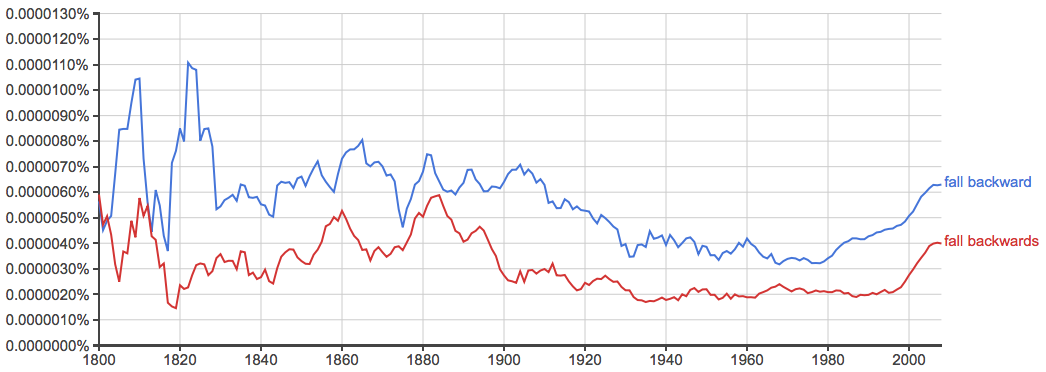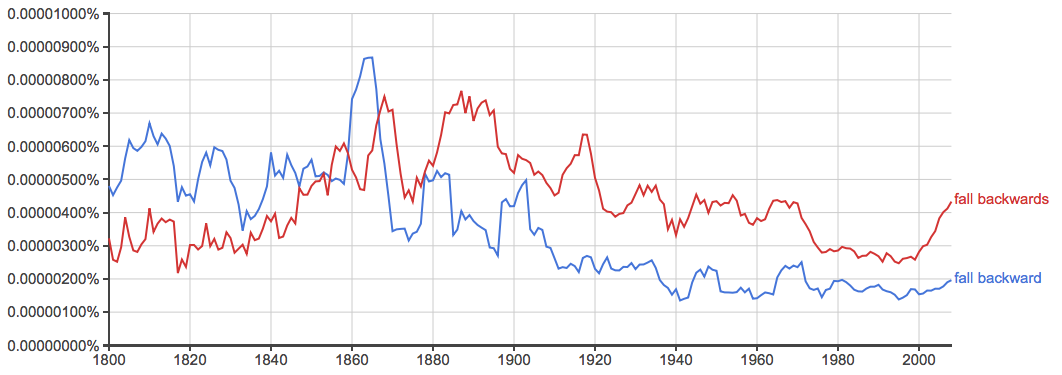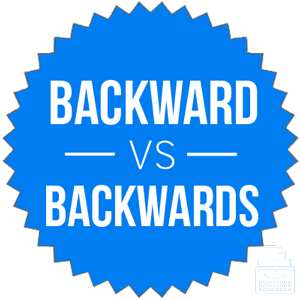Directional adverbs are, intuitively, adverbs that specify direction. They modify verbs by giving more detail about how they are performed. You can count backward from 100 or forward from 100, but only by counting backward will you ever reach 0.
American English writers and British English writers treat their directional adverbs differently. The British typically add an -s to the end of these words, forming upwards, downwards, skywards, towards, etc. Americans are just fine without the -s, leaving their directional adverbs as upward, downward, skyward, toward, and the like.
What about when these words are also adjectives, like backward? Continue reading to learn more about the multiple uses of this particular directional adverb.
What is the Difference Between Backward and Backwards?
In this post, I will compare backwards vs. backward. I will use each of these words in at least one example sentence, so that you can see them in context.
Plus, I will also show you a helpful memory tool that makes choosing either backwards or backward a little easier.
When to Use Backward
 What does backward mean? Backward can be either an adjective or an adverb.
What does backward mean? Backward can be either an adjective or an adverb.
As an adjective, backward means regressive or underdeveloped.
Here are a few examples,
- The administration’s backward policies will undo 50 years of social progress.
- In a backward little town in Iowa, a tall farmer was working on his swing.
Backward is also a directional adverb. It is the opposite of forward, namely, the direction behind someone.
For example,
- Kenny accidentally dropped the basketball, and it rolled backward all the way down the hill.
- Dick Richards glanced backward to ensure no one was following him, then lit a cigarette.
- A pair of otherwise distinguished physicists have suggested that the hypothesized Higgs boson, which physicists hope to produce with the collider, might be so abhorrent to nature that its creation would ripple backward through time and stop the collider before it could make one, like a time traveler who goes back in time to kill his grandfather. –The New York Times
There are some usage differences to remember. In British English, backward is only an adjective. The British typically add an -s to the end of their directional adverbs. In this case, the resulting word is backwards.
When to Use Backwards
What does backwards mean? Backwards is a directional adverb. It has the same definition as backward above, but it primarily appears in British English. Check out the charts below.
- They discovered that when dragging food backwards, the ants periodically stopped, put the giant crumb down, and walked around in a little loop. –The Guardian
American English:

British English:

I have isolated the use of backward vs. backwards as adverbs by graphing fall backward and fall backwards. Americans clearly prefer backward. Conversely, British English writers prefer backwards.
The graphs aren’t 100 percent exhaustive in their scope, since they only look at books published in English since 1800, but they clearly illustrate long-term usage trends.
Trick to Remember the Difference
 If you are using the word as an adjective, the choice is clear: only backward is an adjective.
If you are using the word as an adjective, the choice is clear: only backward is an adjective.
With adverbs, though, it’s a little trickier. Americans prefer backward as an adjective as well, while the British are likely to prefer backwards.
Since backwards has an S, like the British county of Surrey, you can always remember that backwards is the British adverb.
Summary
Is it backward or backwards? Backward is an adjective that means regressive or underdeveloped. It is also a directional adverb in American English. In British English, it becomes backwards as a directional adverb, so keep your audience in mind when choosing one of these words.
To summarize,
- Only backward is an adjective.
- Backward is the preferred adverb in American English.
- Backwards is preferred in British English.
Contents
